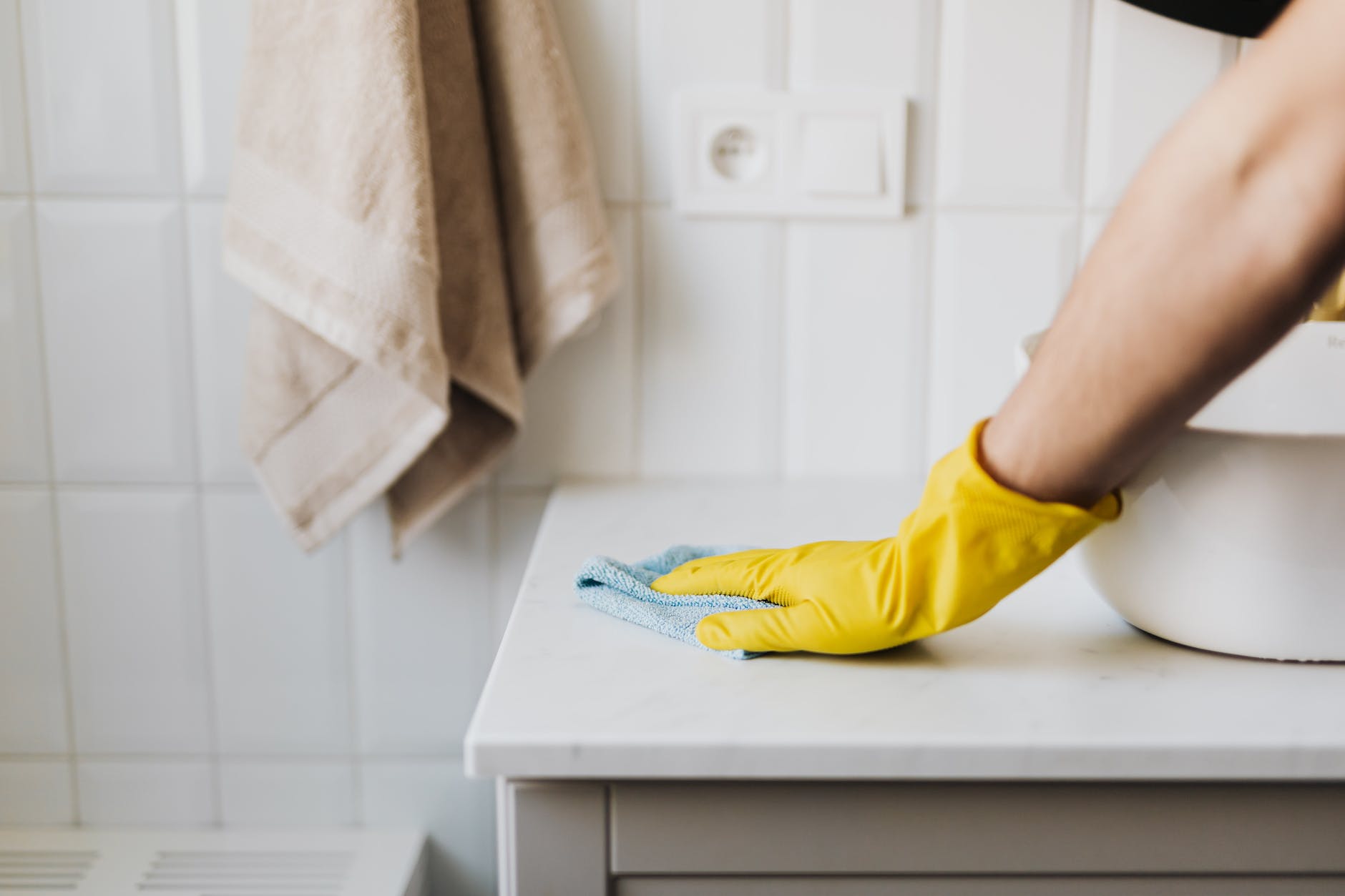Introduction to Tile Leveling Systems
Before diving into the intricacies of tile leveling systems, it is essential to understand the importance of level tiles and the role that these systems play in achieving aesthetically pleasing and durable tile installations.
The Importance of Level Tiles
Level tiles are crucial for both aesthetic and practical reasons. Visually, uneven tiles can create an unprofessional appearance, with misaligned grout lines and irregular surfaces. From a practical standpoint, tiles that are not level can present tripping hazards, make cleaning more difficult, and potentially lead to premature wear and tear or damage to the tiles themselves.
The importance of level tiles extends beyond the immediate visual impact. Uneven tiles can affect the overall quality and value of the tiling project, whether it’s in a residential kitchen, a commercial lobby, or a small bathroom. Therefore, achieving level tiles is a critical goal for those seeking professional results and long-lasting tile installations.
The Role of Tile Leveling Systems
This is where tile leveling systems come into play. These specialized systems are designed to ensure that tiles are installed level, with even grout lines and a flat surface. They work by creating a uniform height on all tiles during the installation process, preventing tiles from moving or settling unevenly as the adhesive dries.
Tile leveling systems are a crucial tool for professional tilers and DIY enthusiasts alike. They help to simplify the tiling process, reduce the chance of errors, and ultimately contribute to a professional finish. By understanding how tile leveling systems work and how to use them effectively, individuals can achieve flawless floors and avoid common tiling mistakes.
In the following sections, the principles and components of tile leveling systems will be explained in more detail. Readers will gain insights into achieving professional results with tile leveling systems, as well as techniques and tips for successful tile leveling.
How Tile Leveling Systems Work
An understanding of tile leveling systems is vital for achieving professional and aesthetically pleasing results in tiling projects. This section will explain the principles behind tile leveling and outline the key components of a tile leveling system.
The Principle Behind Tile Leveling
Tile leveling is based on the principle of maintaining uniform height across all tiles during installation, ensuring a smooth, even surface. This is especially important when dealing with large format tiles or tiles of varying thicknesses. The aim is to prevent tile lippage – a condition where the edge of one tile is higher than the edge of an adjacent tile.
The use of a tile leveling system helps to maintain the alignment of tiles during the adhesive drying phase, a time when tiles can shift or sink due to uneven weight distribution or subfloor inconsistencies. By ensuring a level surface during this critical stage, tile leveling systems contribute significantly to a professional and high-quality finish.
A tile leveling system is not a replacement for proper floor or wall preparation. For an optimal tiling outcome, the surface should be properly cleaned, leveled, and primed prior to installation. For more information on surface preparation, refer to our guide on tiling.
Components of a Tile Leveling System
A typical tile leveling system consists of three key components: clips, wedges, and a special tool for tightening and loosening the wedges.
- Clips: These are thin, flat pieces of plastic with a central slot for the wedge. The base of the clip is placed beneath the tiles during installation, acting as a spacer to ensure equal distance between tiles.
- Wedges: These are inserted into the slots of the clips. As the wedge is pushed further into the clip, it exerts upward pressure on the tile, leveling it with the adjacent tiles.
- Tightening/Loosening Tool: This tool is used to adjust the pressure exerted by the wedge on the clip. By tightening or loosening the wedge, the installer can control the level of each tile.
Once the adhesive is dry, the protruding part of the clip is easily removed by kicking or hitting with a rubber mallet. What remains beneath the tile is the base of the clip, which is safely embedded in the adhesive and does not affect the grouting process. For more insights into grouting methods, see our article on grouting techniques for perfect finishes every time.
| Component | Function |
|---|---|
| Clips | Act as spacers and provide a slot for wedges |
| Wedges | Adjust the level of tiles |
| Tightening/Loosening Tool | Controls the pressure of the wedge on the clip |
By understanding the principle behind tile leveling and the components of a tile leveling system, individuals and contractors alike can ensure a level, lippage-free finish on their tiling projects, achieving professional results every time.
Advantages of Using Tile Leveling Systems
With the advent of tile leveling systems, achieving a flawless tiled surface has become simpler than ever. There are several benefits that these systems provide, from ensuring professional results to preventing tile lippage and promoting the longevity of your tile work.
Ensuring Professional Results
One of the primary advantages of using a tile leveling system is the professional-grade results it can deliver. These systems are designed to maintain a consistent level across all tiles, ensuring a smooth and even surface. This uniformity can significantly enhance the aesthetic appeal of your tiled area, whether it’s a kitchen backsplash, bathroom floor, or patio. Consequently, the use of such systems can contribute to an increase in property value, making it a worthy investment for homeowners and contractors alike. For more insights into tiling, check out our article on advanced tiling tips for commercial projects.
Preventing Tile Lippage
Tile lippage – a condition where one edge of a tile is higher than the adjacent tile – can be a significant issue in tiling projects. Not only does it affect the overall look of the tiled surface, but it can also pose a tripping hazard. Tile leveling systems play a crucial role in preventing tile lippage by keeping the tiles at the same height during the setting process. This results in a safer, more attractive surface. For more tips on how to avoid common tiling mistakes, refer to our guide on DIY tiling mistakes to avoid for homeowners.
Promoting Longevity of Your Tile Work
A well-leveled tile surface contributes to the durability and longevity of the tile work. Uneven tiles can lead to problems down the road, such as cracking or loosening due to uneven weight distribution. By using a tile leveling system, it ensures that the tiles are set securely and evenly, reducing the risk of future problems and the need for repair or replacement. This aspect also translates into long-term savings, making tile leveling systems a smart choice for any tiling project. To understand more about maintaining your tiles post-installation, read our article on how to maintain your tiled surfaces: easy cleaning tips.
In conclusion, tile leveling systems offer a range of benefits that make them an essential tool for any tiling project. By incorporating these systems into your tiling practices, you can achieve an impeccable, professional look while ensuring the longevity of your tile work.
Tile Leveling Techniques
A well-executed tile installation project is a blend of artistry and technical skill. Understanding the techniques behind tile leveling is instrumental in achieving professional results. Here, we’ll explore the selection of the right size spacers, the correct installation of leveling clips and wedges, and other critical steps for successful tile leveling.
Selecting the Right Size Spacers
One of the key aspects of tile leveling is selecting the right size spacers. These small tools help maintain a consistent gap between tiles, ensuring even grout lines and a symmetrical appearance. The size of the spacers used depends largely on the size of the tiles and the desired grout line width.
Typically, larger tiles require bigger spacers, as the size of the tile can affect the perception of the grout line. For instance, a 2mm grout line may look proportionate on a small tile but can appear too narrow for larger tiles.
When selecting spacers, it’s also important to consider the type of tile and the overall design aesthetic. Some types of tile, such as natural stone or handmade tiles, may require larger spacers to accommodate size variations. Similarly, certain design styles may call for wider grout lines to enhance visual interest. For more information about choosing the right tile, read our guide on choosing the right tile for your kitchen.
Proper Installation of Leveling Clips and Wedges
The use of leveling clips and wedges can greatly enhance the final outcome of a tiling project. These components form part of a tile leveling system, designed to create a flat tile surface and prevent tile lippage.
Leveling clips are inserted beneath the tile edges, while wedges are slid into the clips over the top of the tiles. The wedges apply tension to the clips, pulling the tiles into alignment and ensuring a level surface.
It’s important to position the leveling clips correctly around the perimeter of each tile and to apply an even amount of pressure when inserting the wedges. This will help to achieve a consistent level across the entire tile surface.
Critical Steps for Successful Tile Leveling
Achieving flawless tile leveling involves several critical steps. First, the tile surface must be thoroughly prepared. This includes removing any debris or loose material and ensuring the substrate is level.
Next, the tiles must be carefully laid out according to the desired pattern. This involves positioning the tiles and spacers correctly, applying the adhesive evenly, and using the leveling system to achieve a flat finish.
Once the tiles are set, the leveling clips and wedges can be removed, leaving a perfectly level tile surface ready for grouting.
After grouting, it’s important to maintain the tile work post-installation to ensure its longevity. This includes regular cleaning and re-sealing when necessary. For more maintenance tips, check out our article on how to maintain your tiled surfaces.
By mastering these tile leveling techniques, you can achieve a professional finish on any tiling project, whether it’s a kitchen backsplash, bathroom floor, or outdoor patio. Remember, practice makes perfect, and with patience and precision, you can achieve flawless floors every time.
Common Pitfalls in Tile Leveling
While tile leveling systems are instrumental in achieving professional results and flawless finishes, every tiling project comes with potential challenges. Recognizing these pitfalls and understanding how to overcome them can significantly improve your tiling experience.
Avoiding Common Mistakes
One of the most common mistakes in tile leveling is failing to select the appropriate size spacers. The spacers’ size influences the grout lines’ width and the overall aesthetic of your tiling project. Always check for the manufacturer’s recommendations on the tile size and type to determine the suitable spacer size.
Another common mistake is the improper installation of leveling clips and wedges. They should be installed in a way that they exert equal pressure on all sides of the tile. This ensures that the tiles are held at the same level during the adhesive’s curing process.
Neglecting to clean the tile surface before installation is another common pitfall. Any dust or debris on the tile surface can impede the adhesive’s ability to bond the tile to the substrate. Always clean the surface thoroughly before starting your tiling project. For more information on how to prepare your tile surface, check our guide on understanding tile adhesives.
Addressing Potential Challenges
One of the main challenges in tile leveling is dealing with uneven substrates. In such cases, it’s critical to level the floor or wall before starting the tile installation. This might require additional work like using a self-leveling compound, but it’s essential for achieving a seamless and level finish.
Another challenge is tiling around obstacles like pipes or outlets. In such cases, careful planning and accurate measurements are crucial. You might need to cut the tiles to fit around these obstacles, which requires precision and patience. Check our article on innovative tiling solutions for challenging spaces for more tips.
Lastly, remember that while a tile leveling system can greatly aid in achieving level tiles, it doesn’t replace the need for proper tiling techniques. Always ensure to use the right amount of adhesive, apply it evenly, and adjust the tiles carefully to avoid tile lippage.
By being aware of these common pitfalls and challenges, you can utilize tile leveling systems more effectively and ensure a successful tiling project. For more advanced tiling tips, check out our article on advanced tiling tips for commercial projects.
Tips for Achieving Flawless Floors
To achieve professional results with tile leveling systems, it’s important to adhere to best practices in every phase of the project, from surface preparation to post-installation maintenance. This section will explain how you can prepare your tile surface, install tiles correctly, and maintain your tile work post-installation.
Preparing Your Tile Surface
Proper preparation of the tile surface is crucial for the success of your tiling project. Begin by ensuring the surface is clean, dry, and free from debris. Any cracks or uneven spots should be filled and leveled. It’s also important to check that the surface is structurally sound and capable of supporting the weight of the tiles.
Always check the manufacturer’s instructions for any specific surface preparation requirements for your chosen tiles. For example, some tiles may require a specific type of adhesive or underlayment. For more advice on this, check out our guide on understanding tile adhesives.
Adhering to Best Practices in Tile Installation
Once the surface is properly prepared, it’s time to proceed with the tile installation. Start by planning your layout to ensure even spacing and alignment of tiles. Use the tile leveling system to maintain even levels and prevent tile lippage.
Ensure that the adhesive is applied evenly and in the right quantity. Too much adhesive can cause the tiles to shift, while too little can result in poor adhesion. Always follow the manufacturer’s instructions for the best results.
When installing the tiles, apply even pressure to ensure they are firmly bedded in the adhesive. Use spacers to maintain consistent grout lines and remove them before the adhesive sets. Once the tiles are set, apply grout according to the manufacturer’s instructions. For more tips on grouting, check out our guide on grouting techniques for perfect finishes every time.
Maintaining Your Tile Work Post-Installation
Proper maintenance is key to preserving the beauty and longevity of your tile work. Regular cleaning with a mild detergent and a soft cloth or mop can keep your tiles looking their best. Avoid using harsh chemicals or abrasive cleaning tools that could damage the tile surface.
Deal with any spills promptly to prevent staining. For tougher stains, refer to the tile manufacturer’s instructions for recommended cleaning methods. Regularly check for loose or damaged tiles and repair or replace them as needed.
Sealing your grout lines can help prevent staining and make them easier to clean. Reseal them as needed, based on the manufacturer’s recommendations. For more tips on maintaining your tiled surfaces, check out our article on how to maintain your tiled surfaces: easy cleaning tips.
By following these tips and using a tile leveling system, you can achieve flawless, professional-looking floors. With a little planning and attention to detail, your tiling project can be a success.




